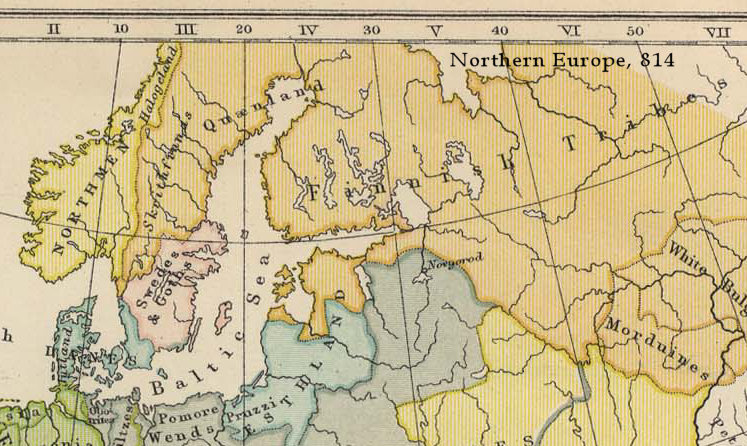Tomenable
Elite member
- Messages
- 5,419
- Reaction score
- 1,337
- Points
- 113
- Location
- Poland
- Ethnic group
- Polish
- Y-DNA haplogroup
- R1b-L617
- mtDNA haplogroup
- W6a
It is marker of curious history. Cousin clade of Rurik's Scandinavian
These branches split 2500 years ago (or 2500 years before Rurik's birth - I don't remember exactly which of the two).
Veeeeery distant cousins.
BTW - what do you think, was Rurik Germanic-speaking or Non-Germanic speaking? Some theories say that he was a Kven or a Finn.
And if Germanic-speaking then probably he was a Germanized guy with Non-Germanic genetic ancestry, as indicated by his haplogroup.
What is interesting is that the Rurikid dynasty had absolutely no any "typically Germanic" haplogroups.
Because apart from N1c1 (which was most numerous among descendants of Rurikids), the following haplogroups were found:
R1a L260, R1a Z92, R1a M458, R1a Z280 and I2a1.
On the other hand, no of Rurikid descendants had "typically Germanic" haplogroups such as R1a Z284, R1b U106 or I1.
The Rurikid Dynasty DNA Project was by the way led by Polish scientist - doctor Andrzej Bajor.
I've heard that they are also planning to examine the genes of the Piast Dynasty (founders of Poland).
=======================================
As for the theory that Rurik was a Kven.
Here is a map of Kvens / Kvenland according to Ohthere of Hålogaland (9th century Norwegian traveller):
http://www.sagazorm.net/zorm/mythology/ohthere/ow.html
http://www.historyfiles.co.uk/KingListsEurope/ScandinaviaSweden.htm

According to Ohthere, in the mountains east of the Norwegians lived also some Finns. North of the Finns lived the Sami / Lapps. East and south-east of the Finns lived the Kvens, who often raided Norway (and Norwegians sometimes fought back across the mountains).
According to Norna-Gests þáttr Saga in 750 AD Kvens together with Curonians (who were Balts) invaded Southern Sweden.
It is uncertain what language was spoken by those Kvens, but certainly it was not a Germanic language.
It could be one of Finno-Ugric languages, or maybe some other Non-Indo-European language. Rather not Baltic.
Ohthere mentions Finns, Kvens and Sami separately. Sami people and their language are only very distantly related to Baltic Finns. But let's remember that "Finns" is not an originally Finnic name, but it is how foreigners (including Germanic people) called them.
Finland is after all Suomi in Finnish language, and Finns call themselves Suomalaiset.
In Sweden there are 1961 toponyms starting with Fin-, and only 892 starting with Dan- (in southern Sweden).
As we know southern Sweden used to belong to Denmark and was inhabited at least partially by ethnic Danes.
Fin- toponyms are also places which used to be inhabited by "Finns" (whatever it meant at that time).
Some of these toponyms are related to recent migrations, but some other indicate that much of Sweden in ancient times was inhabited by Non-Germanic peoples, who later got assimilated or destroyed / forced to emigrate by Germanic Swedes.
Question is - how far south in Sweden did those Non-Germanic Kvens originally live?
There is even a region called Finneveden as far south as in the southern Swedish province of Smaland.
According to Texas University historical maps collection those "Finns" / "Kvens" (orange) extended almost to the coast of the North Sea:

"Swedes & Goths" according to this map lived only in Southern Sweden, except for South-Western part which was Danish.






